32 physics experiments that changed the world
From the discovery of gravity to the first mission to defend Earth from an asteroid, here are the most important physics experiments that changed the world.

Physics experiments have changed the world irrevocably, altering our reality and enabling us to take gigantic leaps in technology. From ancient times to now, here's a look at some of the greatest physics experiments of all time.

Conservation of energy
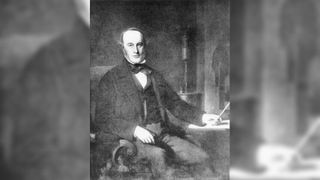
Energy conservation — the idea that energy cannot be created or destroyed, only transformed — is one of the most important laws of physics. James Prescott Joule demonstrated this rule, the first law of thermodynamics , when he filled a large container with water and fixed a paddle wheel inside it. The wheel was held in place by an axle with a string around it and then looped over a pulley and attached to a weight, which, when dropped, caused the wheel to spin. By sloshing the water with the wheel, Joule demonstrated that the heat energy gained by the water from the wheel's movement was equal to the potential energy lost by dropping the weight.
Measurement of the electron's charge
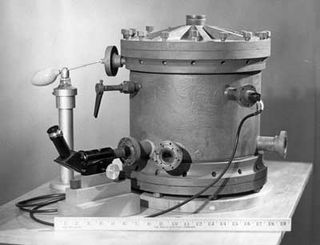
As the fundamental carriers of electric charge, electrons carry the smallest amount of electricity possible. But the particles are truly tiny, with a mass 1,838 times smaller than the already-minuscule proton.
So how could you measure the charge on something so small? Physicist Robert Millikan's answer was to drop electrically charged oil drops through the plates of a capacitor and adjust the voltage of the capacitor until the electric field it emitted produced a force on some of the drops that balanced out gravity — thus suspending them in the air. Repeating the experiment for different voltages revealed that, no matter the size of the drops, the total charge it carried was a multiple of a base number. Millikan had found the fundamental charge of the electron.
"Gold foil experiment" revealing the structure of the atom
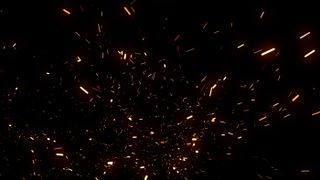
Once thought to be indivisible, the atom was slowly divided and split by a series of experiments during the late 19th and early 20th centuries. These included J.J. Thomson's 1897 discovery of the electron and James Chadwick's 1932 identification of the neutron. But perhaps the most famous of these experiments was Hans Geiger and Ernest Marsden's " gold foil experiment ." Under the direction of Ernest Rutherford, the students fired positively charged alpha particles at a thin sheet of gold foil. To their surprise, the particles passed through, revealing that atoms consisted of a positively charged nucleus separated by a significant empty space by their orbiting electrons.
Nuclear chain reaction
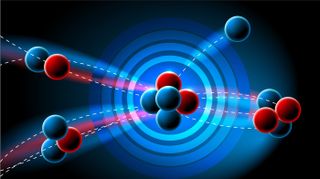
By the mid-20th century, scientists were aware of the basic structure of the atom and that, according to Einstein, matter and energy were different forms of the same thing. This set the stage for the wartime work of Enrico Fermi, who in 1942 demonstrated that atoms could be split to release enormous quantities of energy.
While working at the University of Chicago with an experimental setup he called an "atomic pile," Fermi demonstrated the first-ever controlled nuclear fission reaction. Fermi fired neutrons at the unstable isotope uranium-235, causing it to split and release more neutrons in a growing chain reaction. The experiment paved the way for the development of nuclear reactors and was used by J. Robert Oppenheimer and the Manhattan Project to build the first atomic bombs.
Wave-particle duality
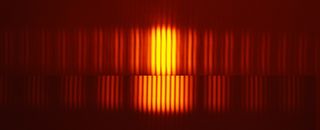
One of the most famous experiments in physics is also one that illustrates, with disturbing simplicity, the bizarreness of the quantum world. The experiment consisted of two slits, through which electrons would travel to create an interference pattern on a screen, like waves. Scientists were stunned when they placed a detector near the screen and found that its presence caused the electrons to switch their behavior to act instead as particles.
First performed by Thomas Young to demonstrate the wave nature of light, the experiment was later used by physicists in the 20th century to show that all particles, including photons , were both waves and particles at the same time — and they acted more like particles when they were being measured directly.
Splitting of white light into colors
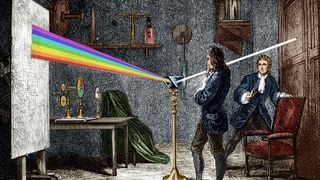
White light is a mixture of all the colors of the rainbow, but before 1672, the composite nature of light was completely unknown. Isaac Newton determined this by using a prism that bent light of different wavelengths, or colors, by different amounts, decomposing white light into its composite colors. The result was one of the most famous experiments in scientific history and a discovery that, alongside other contributions by Newton, gave birth to the modern field of optics.
Discovery of gravity
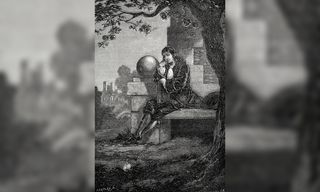
In perhaps the most widely repeated story in all of science, Newton is said to have chanced upon the theory of gravity while contemplating under the shade of an apple tree. According to the legend, when an apple fell and struck him on the head, he supposedly yelled "Eureka!" as he realized that the same force that brought the apple tumbling to Earth also kept the moon in orbit around our planet and Earth circling the sun. That force, of course, would become known as gravity .
The story is slightly embellished, however. According to Newton's own account, the apple did not strike him on the head, and there's no record of what he said or if he said anything, at the moment of discovery. Nonetheless, the realization led Newton to develop his theory of gravity in 1687, which was updated by Einstein's theory of general relativity 228 years later.
Blackbody radiation
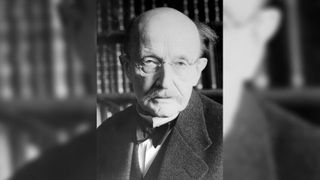
By the turn of the 20th century, many physicists — having advanced theories that explained gravity, mechanics, thermodynamics and the behavior of electromagnetic fields — were confident that they had conquered the vast majority of their field. But one troubling source of doubt remained: Theories predicted the existence of a "blackbody" — an object capable of absorbing and then remitting all incident radiation. The problem was that physicists couldn't find it.
In fact, data from experiments conducted with close approximations of black bodies — a box with a single hole whose inside walls are black — revealed that significantly less energy was emitted from blackbodies than classical theories led scientists to believe, especially at shorter wavelengths. The contradiction between experiment and theory became known as the "ultraviolet catastrophe."
The discovery prompted Max Planck to propose that the energy emitted by blackbodies wasn't continuous but rather split into discrete integer chunks called quanta. His radical proposal catalyzed the development of quantum mechanics , whose bizarre rules are completely unintuitive to observers living in the macroscopic world.
Einstein and the eclipse
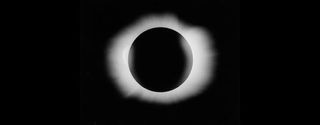
Following its publication in 1915, Einstein's groundbreaking theory of general relativity briefly remained just that — a theory. Then, in 1919, astronomer Sir Arthur Eddington devised and completed stunning proof using that year's total solar eclipse .
Key to Einstein's theory was the notion that space — and, therefore, the path that light would follow through it — was warped by powerful gravitational forces. So, as the moon's shadow passed in front of the sun, Eddington recorded the position of nearby stars from his vantage point on the island of Principe in the Gulf of Guinea. By comparing these positions to those he had recorded at night without the sun in the sky, Eddington observed that they had been shifted slightly by the sun's gravity, completing his stunning proof of Einstein's theory.
Higgs boson
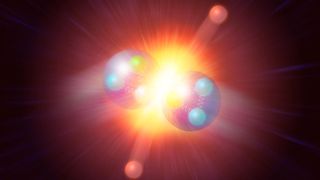
In 1964, Peter Higgs suggested that matter gets its mass from a field that permeates all of space, imparting particles with mass through their interactions with a particle known as the Higgs boson .
To search for the boson, thousands of particle physicists planned, constructed and fired up the Large Hadron Collider . In 2012, after trillions upon trillions of collisions in which two protons are smashed together at near light speed, the physicists finally spotted the telltale signature of the boson.
Weighing the world
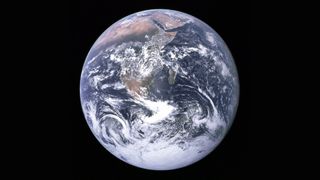
Although he's perhaps best known for his discovery of hydrogen, 18th-century physicist Henry Cavendish's most ingenious experiment accurately estimated the weight of our entire planet. Using a special piece of equipment known as a torsion balance (two rods with one smaller and one larger pair of lead balls attached to the end), Cavendish measured the minuscule force of gravitational attraction between the masses. Then, by measuring the weight of one of the small balls, he measured the gravitational force between it and Earth, giving him an easy formula for calculating our planet's density and — therefore, its weight — that remains accurate to this day.
Conservation of mass
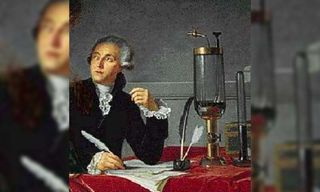
Much like energy, matter in our universe is finite and cannot be created or destroyed, only rearranged. In 1789, to arrive at this startling conclusion, French chemist Antoine Lavoisier placed a burning candle inside a sealed glass jar. After the candle had burned and melted into a puddle of wax, Lavoisier weighed the jar and its contents, finding that it had not changed
Leaning Tower of Pisa experiment
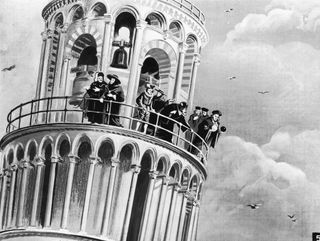
Greek philosopher Aristotle believed that objects fall at different rates because the force acting upon them was stronger for heavier objects — a claim that went unchallenged for more than a millennium.
Then came the Italian polymath Galileo Galilei, who corrected Aristotle's false claim by showing that two objects with different masses fall at exactly the same rate. Some claim Galileo's famous experiment was conducted by dropping two spheres from the Leaning Tower of Pisa, but others say this part of the story is apocryphal. Nonetheless, the experiment was perhaps most famously demonstrated by Apollo 15 astronaut David Scott, who, while dropping a feather and a hammer on the moon, showed that without air, the two objects fell at the same speed.
Detection of gravitational waves
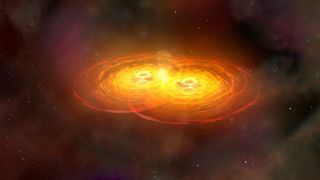
If gravity warps space-time as Einstein predicted, then the collision of two extremely dense objects, such as neutron stars or black holes , should also create detectable shock waves in space that could reveal physics unseen by light. The problem is that these gravitational waves are tiny, often the size of a few thousandths of a proton or neutron, so detecting them requires an extremely sensitive experiment.
Enter LIGO, the Laser Interferometer Gravitational-Wave Observatory. The L-shaped detector has two 2.5-mile-long (4 km) arms containing two identical laser beams. When a gravitational wave laps at our cosmic shores, the laser in one arm is compressed and the other expands, alerting scientists to the wave's presence. In 2015, LIGO achieved its task, making the first-ever direct detection of gravitational waves and opening up an entirely new window to the cosmos.
Destruction of heliocentrism
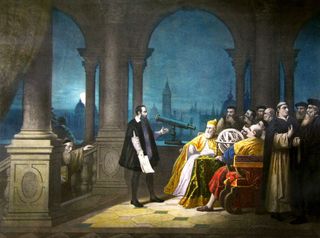
The idea that Earth orbits the sun goes back to the fifth century B.C. to Greek philosophers Hicetas and Philolaus. Nonetheless, Claudius Ptolemy's belief that Earth was the center of the universe later took root and dominated scientific thought for more than a millennium.
Then came Nicolaus Copernicus, who proposed that Earth did, in fact, revolve around the sun and not the other way around. Concrete evidence for this was later offered by Galileo, who in 1610 peered through his telescope to observe the planet Venus moving through distinct phases — proof that it, too, orbited the sun. Galileo's discovery did not win him any friends with the Catholic Church, which tried him for heresy for his unorthodox proposal.
Foucault's pendulum
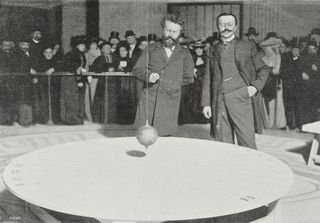
First used by French physicist Jean Bernard Léon Foucault in 1851, the famous pendulum consisted of a brass bob containing sand and suspended by a cable from the ceiling. As it swung back and forth, the angle of the line traced out by the sand changed subtly over time — clear evidence that some unknown rotation was causing it to shift. This rotation was the spinning of Earth on its axis.
Discovery of the electron
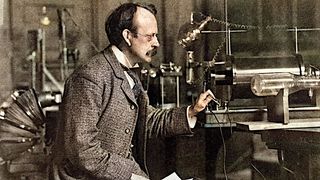
In the 19th century, physicists found that by creating a vacuum inside a glass tube and sending electricity through it, they could make the tube give off a fluorescent glow. But exactly what caused this effect, called a cathode ray, was unclear.
Then, in 1897, physicist J.J. Thomson discovered that by applying a magnetic field to the rays inside the tube, he could control the direction in which they traveled. This revelation showed Thomson that the charge within the tube came from tiny particles 1,000 times smaller than hydrogen atoms. The tiny electron had finally been found.
Deflection of an asteroid
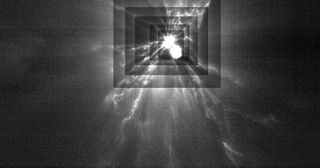
In 2022, NASA scientists hit an astronomical "bull's-eye" by intentionally steering the 1,210-pound (550 kilograms), $314 million Double Asteroid Redirection Test (DART) spacecraft into the asteroid Dimorphos just 56 feet (17 meters) from its center. The test was designed to see if a small spacecraft propelled along a planned trajectory could, if given enough lead time, redirect an asteroid from a potentially catastrophic impact with Earth.
DART was a smashing success . The probe's original goal was to change the orbit of Dimorphos around its larger partner — the 2,560-foot-wide (780 m) asteroid Didymos — by at least 73 seconds, but the spacecraft actually altered Dimorphos' orbit by a stunning 32 minutes. NASA hailed the collision as a watershed moment for planetary defense, marking the first time that humans proved capable of diverting Armageddon, and without any assistance from Bruce Willis.
Faraday induction
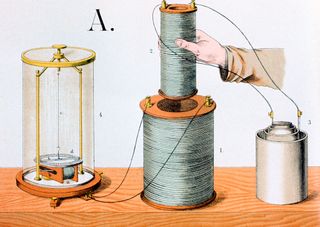
In 1831, Michael Faraday, the self-taught son of a blacksmith born in rural south England, proposed the law of electromagnetic induction. The law was the result of three experiments by Faraday, the most notable of which involved the movement of a magnet inside a coil made by wrapping a wire around a paper cylinder. As the magnet moved inside the cylinder, it induced an electric current through the coil — proving that electric and magnetic fields were inextricably linked and paving the way for electric generators and devices.
Measurement of the speed of light
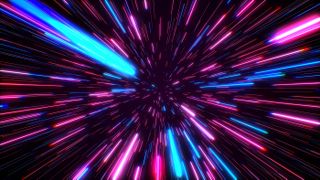
Light is the fastest thing in our universe, which makes measuring its speed a unique challenge. In 1676, Danish astronomer Ole Roemer chanced upon the first estimate for light's propagation while studying Io, Jupiter's innermost moon. By timing the eclipses of Io by Jupiter, Roemer was hoping to find the moon's orbital period.
What he noticed instead was that, as Earth's orbit moved closer to Jupiter, the time intervals between successive eclipses became shorter. Roemer's crucial insight was that this was due to a finite speed of light, which he roughly calculated based on Earth's orbit. Other methods later refined the measurement of light's speed, eventually arriving at its current value of 2.98 × 10^8 meters per second (about 186,282 miles per second).
Disproof of the "luminiferous ether"
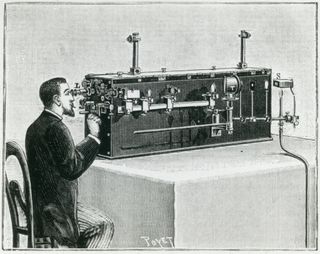
Most waves, such as sound waves and water waves, require a medium to travel through. In the 19th century, physicists thought the same rule applied to light, too, with electromagnetic waves traveling through a ubiquitous medium dubbed the "luminiferous ether."
Albert Michelson and Edward W. Morley set out to prove this conjecture with a remarkably ingenious hypothesis: As the sun moves through the ether, it should displace some of the strange substance, meaning light should travel detectably faster when it moves with the ether wind than against it. They set up an interferometer experiment that used mirrors to split light beams along two opposing directions before bouncing them back with distant mirrors. If the light beams returned at different times, then the ether was real.
But the light beams inside their interferometer did not vary. Michelson and Morley concluded that their experiment had failed and moved on to other projects. But the result — which had conclusively disproved the ether theory — was later used by Einstein in his theory of special relativity to correctly state that light's speed through a fixed medium does not change, even if its source is moving.
Discovery of radioactivity
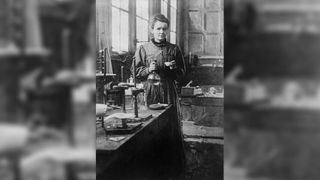
In 1897, while working in a converted shed with her husband Pierre, Marie Curie began to investigate the source of a strange new type of radiation emitted from the elements thorium and uranium. Marie Curie discovered that the radiation these elements emitted did not depend on any other factors, such as their temperature or molecular structure, but changed purely based on their quantities. While grinding up an even more radioactive substance known as pitchblende, she also discovered that it consisted of two elements that she dubbed radium and polonium.
Curie's work revealed the nature of radioactivity, a truly random property of atoms that comes from their internal structure. Curie won the Nobel Prize (twice) for her discoveries — making her the first woman to do so — and later trained doctors to use X-rays to image broken bones and bullet wounds. She died of aplastic pernicious anemia, a disease caused by radiation exposure, in 1934.
Expansion of the universe
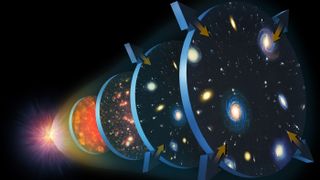
While using the 100-inch Hooker telescope in California to study the light glimmering from distant galaxies in 1929, Edwin Hubble made a surprising observation: The light from the distant galaxies appeared to be shifted toward the red end of the spectrum — an indication that they were receding from Earth and each other. The farther away a galaxy was, the faster it was moving away.
Hubble's observation became a crucial piece of evidence for the Big Bang theory of our universe. Yet precise measurements for galaxies' recession, known as the Hubble constant, still confound scientists to this day .
Put simply, the universe is indeed expanding, but depending on where cosmologists look, it's doing so at different rates. In the past, the two best experiments to measure the expansion rate were the European Space Agency 's Planck satellite and the Hubble Space Telescope . The two observatories, each of which used a different method to measure the expansion rate, arrived at different results. These conflicting measurements have led to what some call a "cosmology crisis" that could reveal new physics or even replace the standard model of cosmology.
Ignition of nuclear fusion
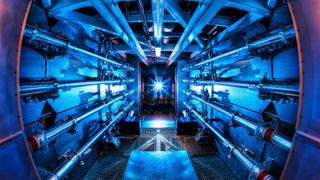
In 2022, scientists at the National Ignition Facility (NIF) at Lawrence Livermore National Laboratory in California used the world's most powerful laser to achieve something physicists have been dreaming about for nearly a century: the ignition of a pellet of fuel by nuclear fusion .
The demonstration marked the first time that the energy going out of the plasma in the nuclear reactor's fiery core exceeded the energy beamed in by the laser, and has been a rallying call for fusion scientists that the distant goal of near-limitless and clean power is, in fact, achievable.
However, scientists have cautioned that the energy from the plasma exceeds only that from the lasers, and not from the energy from the whole reactor. Additionally, the laser-confinement method used by the NIF reactor, built to test thermonuclear explosions for bomb development, will be difficult to scale up.
Measurement of Earth's circumference
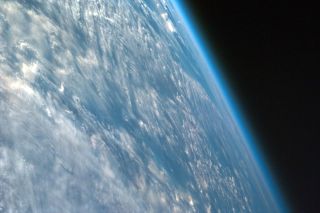
By roughly 500 B.C., most ancient Greeks believed the world was round — citing evidence provided by Aristotle and guided by a suggestion from Pythagoras, who believed a sphere was the most aesthetically pleasing shape for our planet.
Then, around 245 B.C., Eratosthenes of Cyrene thought of a way to make the measurement directly. Eratosthenes hired a team of bematists (professional surveyors who measured distances by walking in equal-length steps called stadia) to walk from Syene to Alexandria. They found that the distance between the two cities was roughly 5,000 stadia.
Eratosthenes then visited a well in Syene that had been reported to have an interesting property: At noon on the summer solstice each year, the sun illuminated the well's bottom without casting any shadows. Eratosthenes went to Alexandria during the solstice, stuck a pole in the ground and measured the shadow from it to be about one-fiftieth of a complete circle. Pairing this with his measurement of the distance between the two cities, he determined that Earth's circumference was about 250,000 stadia, or 24,497 miles (39,424 km). Earth is now known to measure 24,901 miles (40,074 km) around the equator, making the ancient Greeks' measurements remarkably accurate.
Discovery of black holes
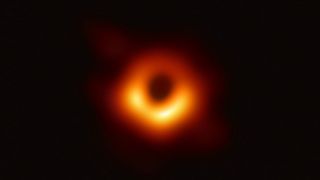
The acceptance of Einstein's theory of general relativity led to some startling predictions about our universe and the nature of reality. In 1915, Karl Schwarzschild's solutions to Einstein's field equations predicted that it was possible for mass to be compressed into such a small radius that it would collapse into a gravitational singularity from which not even light could escape — a black hole.
Schwarzschild's solution remained speculation until 1971, when Paul Murdin and Louise Webster used NASA's Uhuru X-ray Explorer Satellite to identify a bright X-ray source in the constellation Cygnus that they correctly contended was a black hole.
More conclusive evidence came in 2015, when the LIGO experiment detected gravitational waves from two of the colliding cosmic monsters. Then, in 2019, the Event Horizon Telescope captured the first image of the accretion disk of superheated matter surrounding the supermassive black hole at the center of the galaxy M87.
Discovery of X-rays
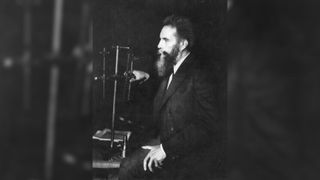
While testing whether the radiation produced by cathode rays could escape through glass in 1895, German physicist Wilhelm Conrad Röntgen saw that the radiation could not only do so, but it could also zip through very thick objects, leaving a shadow on a lead screen placed behind them. He quickly realized the medical potential of these rays — later known as X-rays — for imaging skeletons and organs. His observations gave birth to the field of radiology, enabling doctors to safely and noninvasively scan for tumors, broken bones and organ failure.
The Bell test
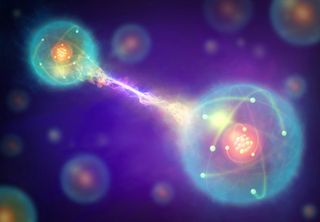
In 1964, physicist John Stewart Bell proposed a test to prove that quantum entanglement — the weird instantaneous connection between two far-apart particles that Einstein objected to as "spooky action at a distance" — was required by quantum theory.
The test has taken many experimental forms since Bell first proposed it, but the findings remain the same: Despite what our intuition tells us, what happens in one part of the universe can instantaneously affect what happens in another, provided the objects in each region are entangled.
Detection of the quark
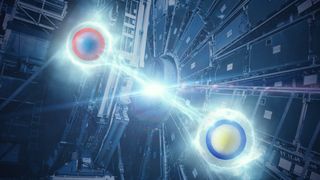
In 1968, experiments at the Stanford Linear Accelerator Center found that electrons and their lepton cousins, muons, were scattering from protons in a distinct way that could only be explained by the protons being composed of smaller components. These findings matched predictions by physicist Murray Gell-Mann, who dubbed them "quarks" after a line in James Joyce's "Finnegans Wake."
Archimedes' naked leap from his bathtub
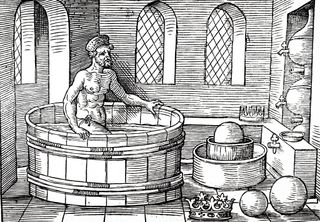
First recorded in the first century B.C. by Roman architect Vitruvius, Archimedes' discovery of buoyancy is one of the most famous stories in science. The prompting for Archimedes' finding came from King Hieron of Syracuse, who suspected that a pure-gold crown a blacksmith made for him actually contained silver. To get an answer, Hieron enlisted Archimedes' help.
The problem stumped Archimedes, but not long after, as the story goes, he filled up a bathtub with water and noticed that the water spilled out as he got in. This caused him to realize that the water displaced by his body was equal to his weight — and because gold weighed more than silver, he had found a method for judging the authenticity of the crown. "Eureka!" ("I've got it!") Archimedes is said to have cried, leaping from his bathtub to announce his discovery to the king.
Deepest and most detailed photo of the universe
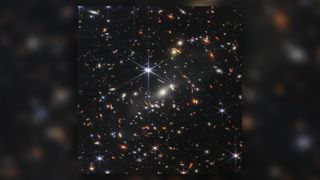
In 2022, the James Webb Space Telescope unveiled the deepest and most detailed picture of the universe ever taken . Called "Webb's First Deep Field," the image captures light as it appeared when our universe was just a few hundred million years old, right when galaxies began to form and light from the first stars started flickering.
The image contains an overwhelmingly dense collection of galaxies, the light from which, on its way to us, was warped by the gravitational pull of a galaxy cluster. This process, known as gravitational lensing, brings the fainter light into focus. Despite the dizzying number of galaxies in view, the image represents just a tiny sliver of sky — the speck of sky blocked out by a grain of sand held on the tip of a finger at arm's length.
OSIRIS-REx asteroid-sampling mission
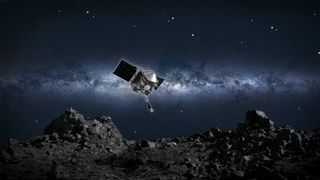
In 2023, NASA's OSIRIS-REx spacecraft came hurtling back through Earth's atmosphere after a years-long journey to Bennu, a " potentially hazardous asteroid " with a 1-in-2,700 chance of smashing cataclysmically into Earth — the highest odds of any identified space object.
The goal of the mission was to see whether the building blocks for life on Earth came from outer space. OSIRIS-REx circled the asteroid for 22 months to search for a landing spot, touching down to collect a 2-ounce (60 grams) sample from Bennu's surface that could contain the extraterrestrial precursors to life on our planet. Scientists have already found many surprising details that have the potential to rewrite the history of our solar system .
Sign up for the Live Science daily newsletter now
Get the world’s most fascinating discoveries delivered straight to your inbox.
Ben Turner is a U.K. based staff writer at Live Science. He covers physics and astronomy, among other topics like tech and climate change. He graduated from University College London with a degree in particle physics before training as a journalist. When he's not writing, Ben enjoys reading literature, playing the guitar and embarrassing himself with chess.
Large Hadron Collider finds 1st evidence of the heaviest antimatter particle yet
Do atoms ever touch?
NASA's Parker Solar Probe will reach its closest-ever point to the sun on Christmas Eve
Most Popular
- 2 Everything you need to know about digiscoping
- 3 MIT's massive database of 8,000 new AI-generated EV designs could shape how the future of cars look
- 4 'Rising temperatures melted corpses out of the Antarctic permafrost': The rise of one of Earth's most iconic trees in an uncertain world
- 5 Space photo of the week: James Webb and Chandra spot a cosmic 'Christmas Wreath' sparkling in the galaxy next door
- Skip to primary navigation
- Skip to main content
- Skip to primary sidebar

- FREE Experiments
- Kitchen Science
- Climate Change
- Egg Experiments
- Fairy Tale Science
- Edible Science
- Human Health
- Inspirational Women
- Forces and Motion
- Science Fair Projects
- STEM Challenges
- Science Sparks Books
- Contact Science Sparks
- Science Resources for Home and School
Top 5 physics experiments you can do at home
October 17, 2022 By Emma Vanstone Leave a Comment
Physics is key to understanding the world around us. While some aspects may seem tricky to understand, many fundamental physics concepts can be broken down into simple concepts, some of which can be demonstrated using basic equipment at home.
This list of 5 physics experiments you can try at home is a great starting point for understanding physics and, hopefully a source of inspiration for little scientists everywhere!
Physics experiments you can do at home
1. archimedes and density.
The story behind Archimedes’ discovery of density is that he was asked by the King of Sicily to work out whether a goldsmith had replaced some gold from a crown with silver. Archimedes needed to determine if the goldsmith had cheated without damaging the crown.
The crown weighed the same as the gold the King had given the goldsmith, but gold is more dense than silver, so if there were silver in the crown its density would be less than if it were pure gold. Archimedes realised that if he could measure the crown’s volume, he could work out its density, but calculating the volume of a crown shape was a tough challenge. According to the story, Archimedes was having a bath one day when he realised the water level rose as he lowered himself into the bathtub. He realised that the volume of water displaced was equal to the volume of his body in the water.
Archimedes placed the crown in water to work out its density and realised the goldsmith had cheated the king!
Density Experiment
One fun way to demonstrate density is to make a density column. Choose a selection of liquids and place them in density order, from the most dense to the least dense. Carefully pour a small amount of each into a tall jar or glass, starting with the most dense. You should end up with a colourful stack of liquids!
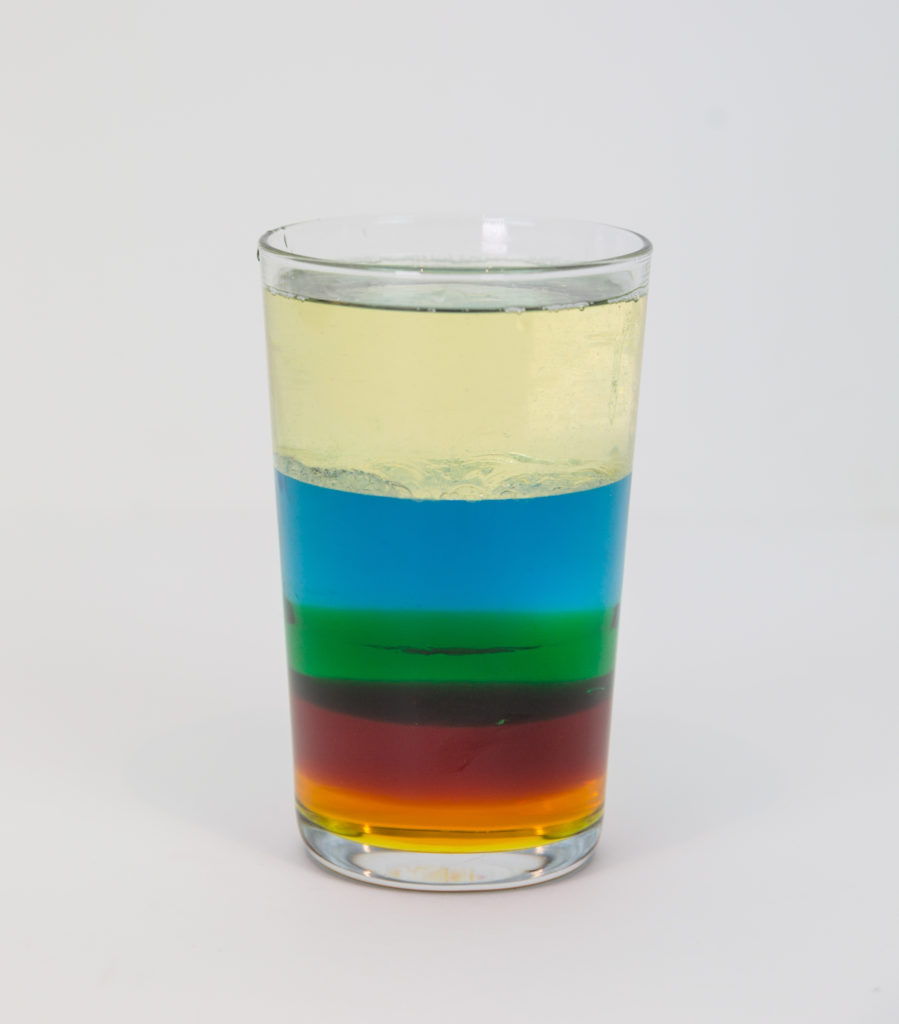
2. Split light into the colours of the rainbow
Isaac Newton experimented with prisms and realised that light is made up of different colours ( the colours of the rainbow ). Newton made this discovery in the 1660s. It wasn’t until the 1900s that physicists discovered the electromagnetic spectrum , which includes light waves we can’t see, such as microwaves, x-ray waves, infrared and gamma rays.
How to split light
Splitting white light into the colours of the rainbow sounds tricky, but all you need is a prism. A prism is a transparent block shaped so light bends ( refracts ) as it passes through. Some colours bend more than others, so the whole spectrum of colours can be seen.
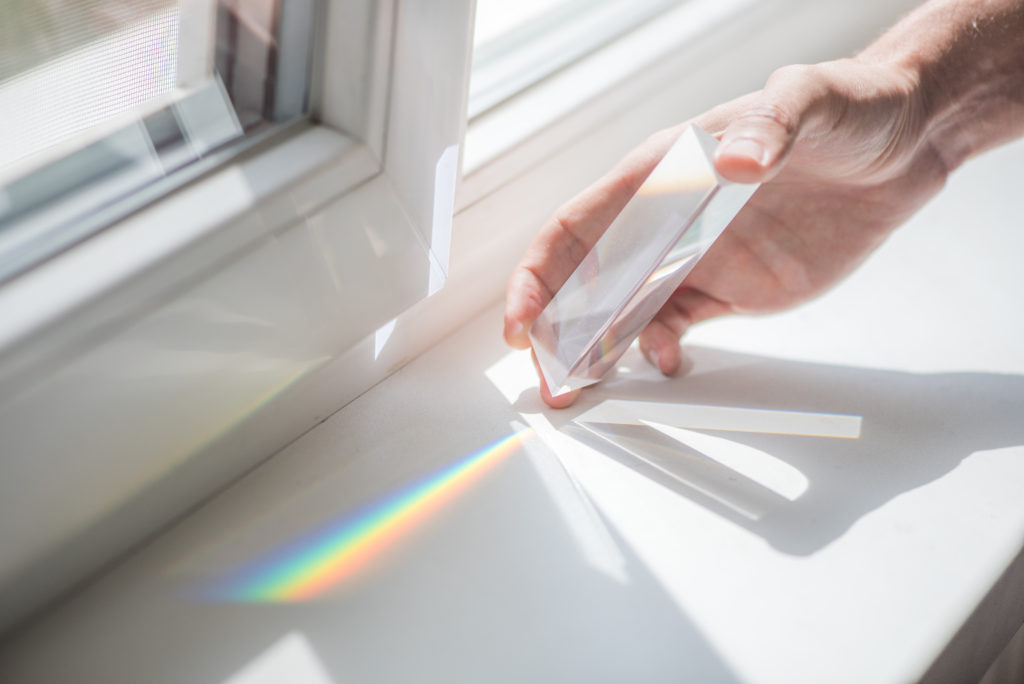
If you don’t have a prism, you can also use a garden hose! Stand with your back to the sun, and you’ll see a rainbow in the water! This is because drops of water act like a prism.
3. Speed of Falling Objects
Galileo’s falling objects.
Aristotle thought that heavy objects fell faster than lighter objects, a theory later disproved by Galileo .
It is said that Galileo dropped two cannonballs with different weights from the leaning tower of Pisa, which hit the ground at the same time. All objects accelerate at the same rate as they fall.
If you drop a feather and a hammer from the same height, the hammer will hit the ground first, but this is because of air resistance!
If a hammer and feather are dropped somewhere with no air resistance, they hit the ground simultaneously. Commander David Scott proved this was true on the Apollo 15 moonwalk!
Hammer and Feather Experiment on the Moon
Brian Cox also proved Galileo’s theory to be correct by doing the same experiment in a vacuum!
While you won’t be able to replicate a hammer or heavy ball and feather falling, you can investigate with two objects of the same size but different weights. This means the air resistance is the same for both objects, so the only difference is the weight.
Take two empty water bottles of the same size. Fill one to the top with water and leave the other empty. Drop them from the same height. Both will hit the ground at the same time!
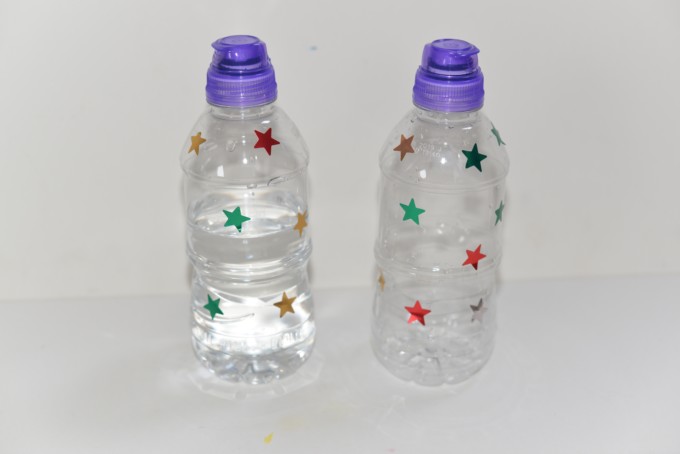
4. Newton’s Laws of Motion
Sir Isaac Newton pops up a lot in any physics book as he came up with many of the laws that describe our universe and is undoubtedly one of the most famous scientists of all time. Newton’s Laws of Motion describe how things move and the relationship between a moving object and the forces acting on it.
Making and launching a mini rocket is a great way to learn about Newton’s Laws of Motion .
The rocket remains motionless unless a force acts on it ( Newton’s First Law ).
The acceleration of the rocket is affected by its mass. If you increase the mass of the rocket, its acceleration will be less than if it had less mass ( Newton’s Second Law ).
The equal and opposite reaction from the gas forcing the cork downwards propels the rocket upwards ( Newton’s Third Law ).
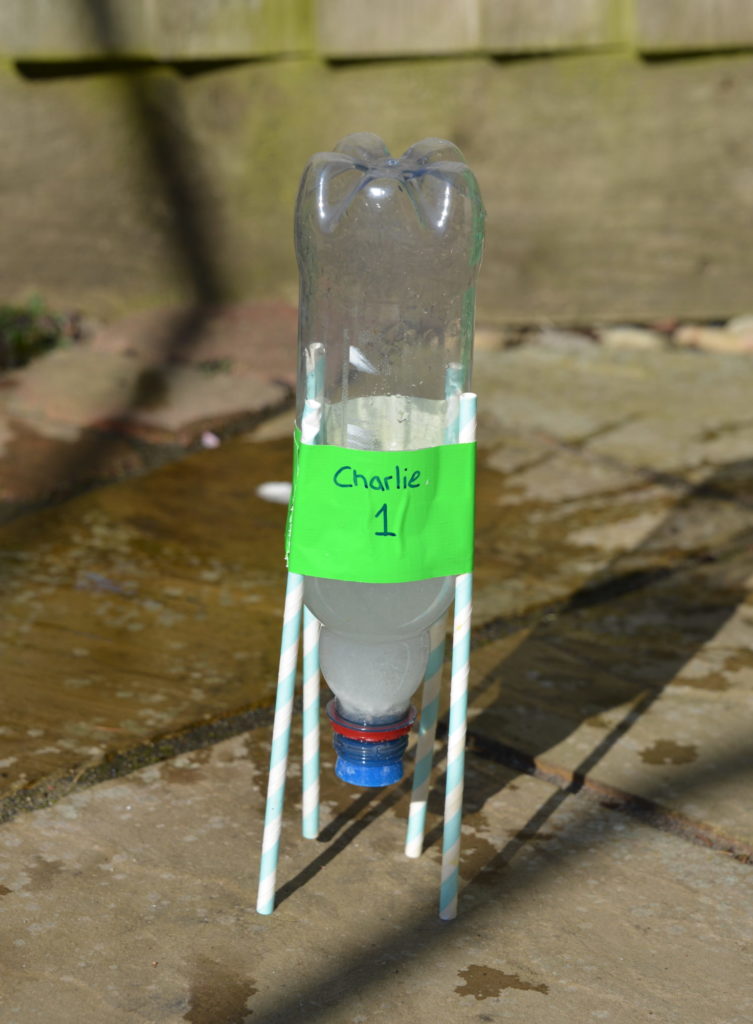
4. Pressure
Pressure is the force per unit area.
Imagine standing on a Lego brick. If you stand on a large brick, it will probably hurt. If you stand on a smaller brick with the same force it will hurt more as the pressure is greater!
Snowshoes are usually very wide. This is to reduce the pressure on the snow so it sinks less as people walk on it.
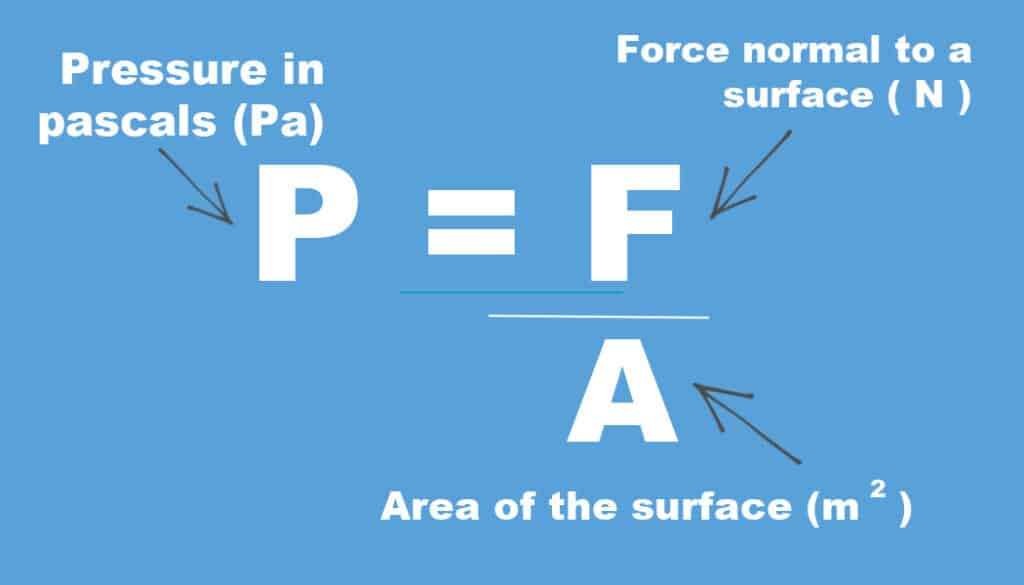
Pressure and Eggs
If you stand on one egg, it will most likely break. If you stand on lots of eggs with the same force, you increase the area the force is applied over and, therefore, reduce the pressure on each individual egg.
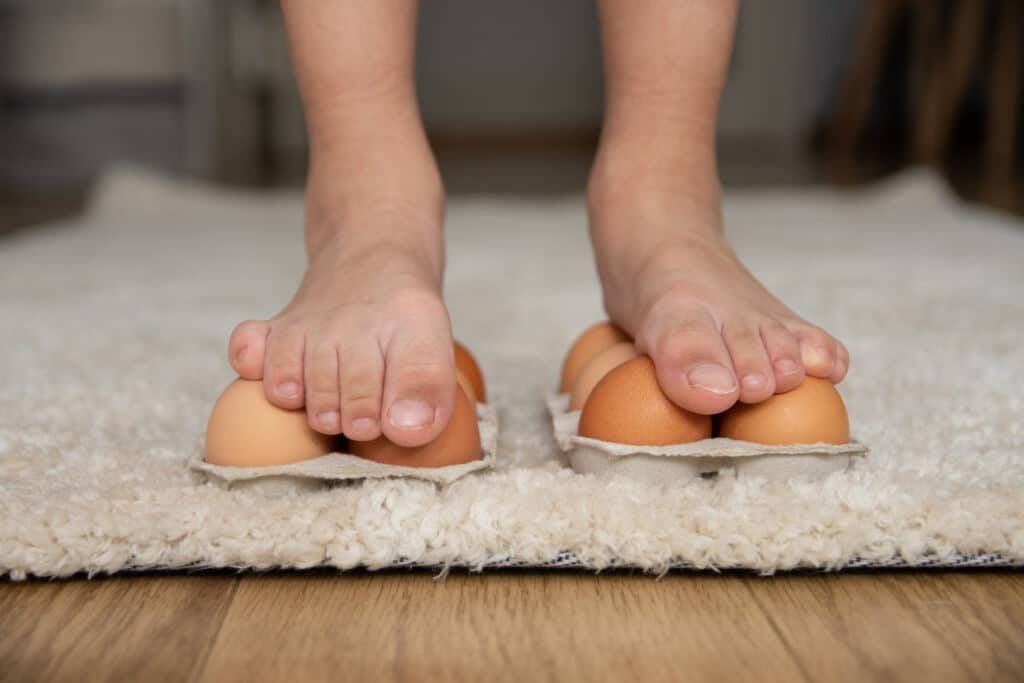
That’s five easy physics experiments you can do at home! Can you think of any more?
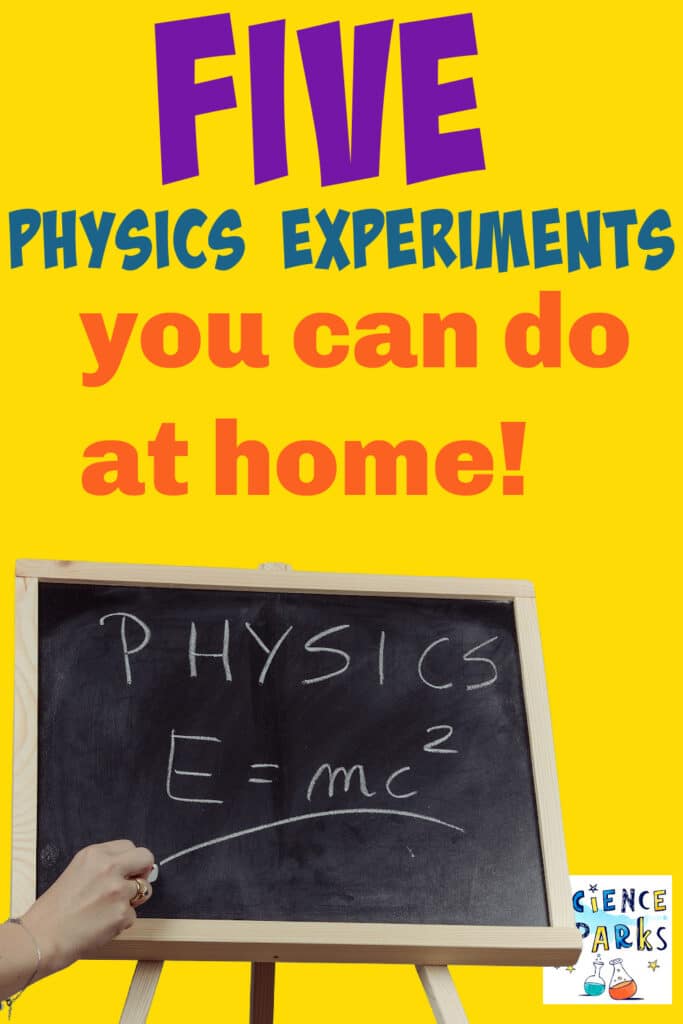
Last Updated on June 14, 2024 by Emma Vanstone
Safety Notice
Science Sparks ( Wild Sparks Enterprises Ltd ) are not liable for the actions of activity of any person who uses the information in this resource or in any of the suggested further resources. Science Sparks assume no liability with regard to injuries or damage to property that may occur as a result of using the information and carrying out the practical activities contained in this resource or in any of the suggested further resources.
These activities are designed to be carried out by children working with a parent, guardian or other appropriate adult. The adult involved is fully responsible for ensuring that the activities are carried out safely.
Reader Interactions
Leave a reply cancel reply.
Your email address will not be published. Required fields are marked *

The Experiment Archive
Physics experiments

Floating ping pong ball

Special: Fire bubbles
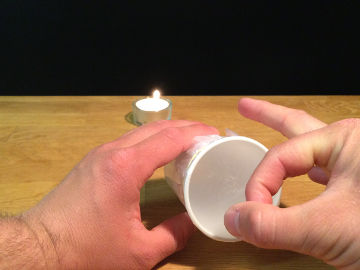
Water implosion

Warm and cold plates

Inexhaustible bottle

Heavy smoke

Brownian motion

Flying static ring

Special: Burning money

Special: Burning towel

Water sucking bottle

Water sucking glass

Imploding soda can

Rolling static soda can

Static paper ghost

Shrinking chip bag

Electric motor

Flashy electric motor

Balloon rocket

Water whistle

Wind-up spinner toy

Balancing soda can


Fireproof balloon

Straw propeller

Electromagnet

Straw rocket launcher

Straw duck call

Silo of salt

Microwave light bulb

Homemade marble run

Cartesian diver
Content of website.
- Skip to primary navigation
- Skip to main content
- Skip to primary sidebar
Teaching Expertise
- Classroom Ideas
- Teacher’s Life
- Deals & Shopping
- Privacy Policy
60 Physics Science Experiments For Middle School: Crafts, Investigations, Model Building, And DIYs
January 11, 2024 // by Carly Gerson
Physics is a subject that can be difficult for students to understand, so hands-on experiences like experiments are excellent to give your students a better understanding of tricky concepts and theories! Not only do experiments and activities help your kiddos’ understanding but they also create an interactive way to engage them in the learning. Read on to discover 60 phenomenal physics science experiments to try out with your middle school students!
1. Newton’s Cradle
Newton’s Cradle is a classic physics experiment that uses basic materials to demonstrate kinetic energy and potential energy . Your students will love creating their very own version using some string and straws! This is a great way to demonstrate the basic concept of energy transfer in an engaging way.
Learn More: 123 Homeschool 4 Me
2. Simple Bernoulli Experiment
The Bernoulli experiment is an excellent way to teach your kids about air pressure. Show your learners how to use construction paper, tape, a bendy straw, a ping pong ball, scissors, and a pencil to create a fun experiment that they can have a go at! This is a simple way to demonstrate to them how large vehicles like planes can stay high in the air. This abstract concept will be brought to life quickly!
3. Car Science Experiment for Air Resistance and Mass
A physics concept that is sure to be fun to teach your kiddies is the impact of mass on motion! They’ll feel like modern physicists as they place cars with different masses on their race track and time them on their journey! While this may seem like a pretty simple experiment, you can challenge your kids to complete lots of different trials to find out how a range of different factors affects the speed of their cars.
Learn More: Frugal Fun 4 Boys
4. Archimedes’ Screw Simple Machine
Can water flow up? Your kids will be able to answer this question after completing this fun experiment! The Archimedes’ Screw is a commonly known invention that moves water upward and transfers it from one place to another. Help your learners construct their own using a piece of plastic pipe and some clear plastic tubing, then let them experiment and see if they can make it work!
5. Layering Liquids Density Experiment
Children will love participating in this colorful activity. Have your students use different colored liquids to test out the density of each one by creating a density tower! Everyone will watch in amazement as the different colored liquids separate and float to different places in the jar!
Learn More: Green Kid Crafts
6. Launching Easter Eggs Experiment
This activity would make for an incredibly fun science fair project or a great science activity during the Easter season. Using a mini catapult and plastic eggs, your kiddies will have great fun testing how mass impacts the distance traveled by the egg. This experiment will definitely make you smile!
Learn More: STL Motherhood
7. Balloon in a Bottle Properties of Air Experiment
Challenge your learners to put a balloon inside a plastic bottle and blow it up; sounds easy enough, right? They’ll find this one to be a little trickier than they initially thought! As they work to try to blow up their balloons discuss the properties of air which makes this seemingly simple task almost impossible!
Learn More: Steve Spangler Science
8. How to Make a Pendulum Wave
This physics science project is both fun to make and incredible to look at! Using washers and a few other simple materials like string, your students will be captivated by their experiment for hours on end. Besides being completely mesmerized, they’ll also learn about waves and motion.
Learn More: YouTube
9. Creating Catapults
A homemade catapult is a great way to use cheap materials in a STEM project. Have your kiddos use simple household and craft materials to determine which combination makes for the best catapult. You can launch anything from scrunched-up paper to marshmallows! Encourage your middle schoolers to consider how they can scientifically measure which catapult is best!
Learn More: Science Gal
10. Inertia Tower Activity
Raise the stakes with this amazingly fun inertia activity. This creative activity uses sheets of paper or index cards to separate a tower of cups or blocks, which your students then need to pull out quickly without disturbing the tower. Can they remove all the pieces of paper?
Learn More: Perkin’s E-Learning
11. Rice Friction Experiment
Friction can be a challenging concept to teach middle school students. Thankfully this experiment makes it a little bit easier! Give your kids a better understanding of this tricky concept by using a plastic bottle, funnel, chopstick, and rice. They’ll learn how to increase and decrease friction and will be amazed when this amazing force lets them lift a bottle up with just a single chopstick!
Learn More: Carrots Are Orange
12. Balancing Robot
Combine arts and crafts and physics with this adorable activity! Use the printable template and have your kids customize their robots, decorating them however they like before cutting them out. Next, you’ll use some putty to stick a penny to the end of each of the robot’s arms. All that’s left is to let them find out where they can get their robots balancing!
Learn More: Buggy and Buddy
13. Make Your Own Ice Cream in a Bag
You had us at ice cream! Your kiddies will be so excited to have a go at making their own ice cream using just a few Ziplock bags. Have them start by measuring cream, sugar, and vanilla flavoring into one bag, making sure it’s sealed up. Then, get them to place this bag inside another bag that also has ice and salt inside and shake! Once they’re done learning, make sure you set aside time for some taste testing!
Learn More: Delish
14. Skittles Density Rainbow
Build the rainbow with this fun density experiment. Start by having your kiddies dissolve Skittles in water, using a different quantity of each color of Skittles in each liquid. They’ll then gently use a pipette to layer their liquids while you discuss how the solids have impacted the density of each liquid!
Learn More: Gift Of Curiosity
15. Dancing Raisins Science Experiment
Did you know that you can make raisins dance? Ok, well maybe they’re not actually dancing, but they’re definitely doing something! Your learners will love this fun science experiment where they’ll watch as they watch the carbonation and bubbles of the soda water lift the raisins and “make them dance”.
16. Learning With Dry Ice
Dry ice is so exciting for your little learners! It has almost magical properties that give it a mysterious element that kids are completely captivated by. Using dry ice is a great way to teach students about how clouds are formed and how they eventually evaporate by capturing a dry ice cloud in a bag! You’ll be inspiring future meteorologists with this visually appealing experiment!
Learn More: Penguin Dry Ice
17. Learning About Arches
Arches are surprisingly impressive feats of architecture. Their unique shape actually makes them surprisingly strong! Teach your kiddos about how heavy-weight objects such as cars on a bridge are supported as they test out different types of arches to see which one holds the most weight!
Learn More: Imagine Childhood
18. Heat Changing Colored Slime
This unique experiment requires very specific materials, but we promise it’s worth it! Blow your kids’ minds as they learn about thermodynamics and how heat can change the color of certain materials as they make some heat-sensitive color-changing slime!
Learn More: Left Brain Craft Brain
19. Homemade Marble Run
Let your kiddies get creative with any materials they can get their hands on with this next activity! Challenge them to create a track for marbles, testing out different course layouts to see how these impact the time it takes the marble to complete it. Encourage them to record their results and share their findings!
Learn More: Buggy And Buddy
20. Ice Hockey Puck Friction Experiment
The ice hockey fans in your class will love this next one! In this activity, your kids will use different flat circular items like bottle caps and coins to determine which materials make the best ice hockey puck! This is a great experiment to take outside on an icy winter day to let them learn about and see friction in action!
Learn More: Science Sparks
21. Transfer of Momentum Basketball Activity
Here’s a quick physics experiment your kiddos can do during recess or on a sunny day! Grab some basketballs and racquetballs and instruct your kids to hold the smaller ball on top of the basketball. Next, have them let go and watch in amazement as the basketball bounces up into the racquetball, transferring momentum as it makes contact!
Learn more: Frugal Fun 4 Boys
22. Pumpkin Boats
Wondering what to do with all those leftover pumpkins after Halloween? Look no further! Get your learners to make them into boats as they investigate the link between density and buoyancy. Support them to make differently-sized pumpkin boats and then make predictions about whether or not their pumpkin boat will sink or float.
Learn More: The Preschool Toolbox
23. How to Make a Hovercraft
Hovercrafts were once something that only appeared in sci-fi stories, but now your kids will be making them in your classroom! Using simple household materials, they’ll learn how to harness the power of air resistance in this unique craft. Neat!
24. St. Patrick’s Day Balloon Rockets
This holiday-themed activity is a great way to teach students about air resistance and acceleration! Your kids will craft their balloon rockets with a balloon, some tape, and a straw to keep it attached to the line. All that’s left is to let go to watch their balloon rockets blast off down the track! Why not make it competitive with a prize for the winning balloon of each race?
Learn More: Housing A Forest
25. Marshmallow Shooter
Your learners will love this silly activity that incorporates a favorite sweet treat and a unique contraption! As they launch their marshmallows through the air, you can discuss how the force of the pull impacts the motion of the marshmallows.
Learn More: Teky Teach
26. Use The Force
Star Wars fans will have fun with this one as they use “the force” to magically pick up paper clips! This exciting activity will have your kiddos wanting to learn more about magnetism and how it works! Simply have them place a large magnet on the back of their hand, reach toward a pile of paper clips, and watch as the paper clips magically fly into their hands!
Learn More: Rookie Parenting
27. Magic Toothpick Star Experiment
You’ll have a tough time convincing your kids that this experiment shows physics at work and not magic! Have your kids take five toothpicks and snap them in half. Let them arrange them as shown, and then drip water in the middle of the sticks. They’ll be amazed as the water moves the sticks, seemingly mending them and creating a star!
Learn More: Living Life And Learning
28. Water Powered Bottle Rocket
Bottle rockets are a fun science experiment to bring the science classroom outdoors . Your students will love learning about pressure and how it impacts the velocity of an item using just a recycled plastic bottle, a cork, some water, and a pump with a needle adaptor. To add even more excitement to this activity, let your kiddos decorate their own rockets!
29. Magnetic Levitation Activity
With all these seemingly magical experiments, your kids are really going to wonder if you attended Hogwarts instead of a teacher-training college! Use the power of magnets to make a pencil float! Show your kids how to position their magnets so that they repel each other enough to suspend a pencil in mid-air!
Learn More: Arvin D. Gupta Toys
30. Rubber Band Powered Car
This adorable craft will teach your kiddos about force and motion! Let them spend some time going through a trial and error process to make a working car that’s powered by applying force to a rubber band! Once they’ve got their models working, let them race to see whose creation goes the fastest and the farthest!
Learn More: Stem Inventions
31. Making a Water Wheel
Waterwheels have been around since Roman times, over 2000 years ago! Historically they were used in mills to grind grains into flour but nowadays they can be used as a source of renewable energy. Task your pupils with making a working waterwheel out of some simple household items like plastic cups, straws, and tape- are they up to the challenge?
Learn More: Deceptively Educational
32. DIY Pulley Physics
This pulley system will show your students that simple machines aren’t always so simple! Using whatever materials they can find and some string, they’ll need to create a fully functional, intricate pulley system along your classroom walls! This would make a great display for the entire school year!
Learn More: The Homeschool Scientist
33. How to Make an Orange Sink or Swim
What is more likely to float, a peeled or unpeeled orange? Let your kids vote on this seemingly straightforward question then reveal the answer with a simple demonstration. Your students will watch in awe as they learn that they can change the density and buoyancy of an object by slightly altering it. In the case of the orange, however, the results might not be what they were expecting!
Learn More: Woo Jr.
34. Paper Airplane Test
There’s nothing kids love more than making and throwing paper airplanes. If they’re usually banned in your classroom, then you might want to consider lifting that ban for one day! Turn this simple activity into an engineering investigation where your students will test out different designs to see which shape of the paper airplane will fly the furthest and which shape will stay in the air the longest! Physics made fun!
Learn More: Feels Like Home
35. Rising Water Experiment
Water experiments in the classroom can be so much fun! This activity will teach your students how temperature and oxygen levels can affect the density of the air! All you’ll need are some matches, a cork, a plate of water, and a glass! They’ll love watching what seems like magic!
Learn More: Teach Beside Me
36. Physics Mystery Bag Challenge
This unique physics activity will have your kiddos work in groups to solve a physics mystery. Each group will receive identical bags of mystery items and will be told what type of machine they need to create. The challenge is that there are no instructions! Using only the items in front of them and their ingenuity, your students will compete to see which group creates the best of the designated machine!
Learn More: Teaching Highschool Math
37. Solar Oven S’mores
Fun science experiments are even better when combined with food! This solar oven teaches your students about how transmission, absorption, and reflection are used in a solar cooker to cook food. Your middle schoolers will be amazed at how easy it is to make yummy smores using an array of simple supplies, such as plastic boxes, aluminum foil, cotton, and glass.
Learn More: PBS
38. Laser Jello
Here’s another edible science project for your class! In this fun project, your kiddos will put the concepts of reflection and refraction into practice in a hands-on experiment. Give them some red and blue Jello to investigate how differently colored lasers project through it; they’ll be amazed as the Jello changes the lasers’ color and sometimes blocks out the light altogether!
Learn More: Exploratorium
39. The Electric Butterfly
Elevate the basic static-electricity balloon experiment by adding a paper butterfly! Teach your learners about positive and negative electrons by charging up the balloon with static electricity and using it to move the paper butterfly’s wings. This hands-on activity is a super way for them to see what can be a very abstract concept in action!
Learn More: CACC Kids
40. Homemade Thermometer
This classic science experiment is great for showing how heat affects certain liquids by making them expand. Using the simple supplies of a bottle, cold water, rubbing alcohol, food coloring, a straw, and some modeling clay, have your students build their very own thermometer. As they heat or cool the surroundings, your kiddos will observe the liquid rising and falling in the straw!
41. DIY Electromagnet
Creating an electromagnet is a cool way of combining middle-grade physics and engineering! This fun activity uses screws, some wire, and batteries to demonstrate how an electric current flows through metal to create a magnetic field. After this simple experiment, you can challenge your kids to take this activity to the next level and create bigger versions like their own electromagnetic cranes!
Learn More: Teach Engineering
42. Optical Illusion Fun
Experiments don’t get much cooler than optical illusions! You can use these amazing visual activities to teach your middle graders about how our eyes process light and send signals to our brains. Simply print out the template and let your kids add some color before they cut them out and attach them to a pencil. As they spin, they won’t believe their eyes! What a fun way to make this lesson about our eyes memorable!
43. Water Cycle in a Bag
This cute little experiment is a great way to give your kids their very own visual of the water cycle! Print off the template and let your kids trace it onto their own Ziploc bag. All that’s left is to add water and tape it to a window where it’ll catch the sun! These little experiments are really quick to make and set up, but your kids will spend days analyzing them!
Learn More: Kiwi Co
44. Homemade Barometer
Your students might have already made a DIY thermometer, but what about a barometer? You can help them learn about atmospheric pressure by crafting barometers using a jar or can, a balloon, a wooden stick, rubber bands, and some tape! As the weather changes over the next few days, so will the air pressure which will move the wooden stick of their barometers! Cool, right?!
Learn More: Easy Science For Kids
45. Basic Motor Mechanics
It is amazing what you can do with some modeling clay, a magnet, a battery, and wire! This cool project showcases how electric energy works, demonstrating the interaction between the current and a magnetic field. This nifty little experiment will definitely get your students’ physics motors running!
Learn More: Education
46. Xylophone fun
Sound waves are much easier to teach and learn about when your kiddies can make visual connections. Have your learners fill empty jars with varying amounts of cold water (and a few drops of food coloring in each to make it look even more interesting) and then let them test the different pitches by hitting each one!
Learn More: Sugar, Spice And Glitter
47. Build a Paper Bridge
This fantastic activity uses some really simple materials to challenge your kiddies to ‘build a bridge’. What seems like a pretty basic activity actually teaches them all about the scientific method and physics concepts behind building a bridge. They’ll learn about concepts like compression and tension to explain how bridges stay in place even under pressure! This is one your future engineers will love!
48. Magnet Maze
Art and physics are combined in this clever classroom experiment! Task your students first of all, with drawing a colorful maze on the outside of the bottle. Next, have them put in different items like coins, marbles, paperclips, and buttons to explore which ones they can attach the magnet to from the outside and navigate through their maze. A -maze- ing, right?!
Learn More: Science Museum Group
49. Super Sundial
If you feel like taking your teaching outdoors, this sundial construction lesson is ideal! Bring some paper plates, bendy straws, and a pencil, and you’re good to go! Your learners won’t need a lot of background knowledge before the activity, but they’re sure to learn a lot about the Earth’s orbit and rotation in the process!
Learn More: Generation Genius
50. Sound Sandwich
Your kiddies might initially be confused when you announce that they’ll be making sound sandwiches! Their confusion will soon turn to fascination at how such simple materials can make really interesting sounds! In this activity, they’ll be learning how to make music with sticks, straws, and rubber bands. See if they can figure out that it is the rubber band vibrating that makes the differently-pitched sounds!
51. Optical Lens Experiment
Did you know that you can actually bend light? Your students will be surprised to learn this for sure! Through this investigation, you’ll teach them how when light goes from one medium to another (e.g. from air to glass), it usually bends. This series of simple activities covers the effects of convex and concave lenses on light, and thus how refraction works.
Learn More: Discover Primary Science And Maths
52. Density Tower floating experiment
Combine the previously mentioned density tower and floating experiments in this cool activity! Using just a few simple ingredients that can be found around most homes, you can instruct your learners to combine cornstarch, vegetable oil, and rubbing alcohol. This will create the colored layers in this cool activity! Then they’ll add small items of their choosing to see which ones float in the various liquids, and at what density!
53. Walking Water experiment
Capillary action isn’t a term that most of your kiddies will be familiar with but after doing this experiment they won’t forget it! Help your learners set up a row of cups with water and different colors of food dye. Next, they’ll add some strips of paper towels dipping each end into a different up and let them watch in amazement as the colored water seems to defy gravity and ‘walk’ up the paper and into the next cup!
Learn More: Made In A Pinch
54. Build a Solar Still
This easy experiment is the perfect way to demonstrate the water cycle and how sunlight can purify water. Start by letting your kiddos have a bit of fun to make ‘dirty’ water using assorted safe and edible kitchen ingredients. Then you’ll challenge them to make their own solar stills from plastic glasses, cling wrap, and, a bowl. Finally, they’ll set their glass of ‘dirty’ water inside the bowl, cover it with cling wrap, and then sit it out in the sun. And voila – clean water!
55. Slinky Sound Waves
A metal slinky is a super simple but really effective source of demonstrating sound waves for your kids. Get two volunteers to hold the ends of the slinky and encourage your other students to take note of the different wave patterns when one or both of them shake it. This is a super way to make this abstract concept a little more visual for your class.
Learn More: Fizzics Education
56. Bike Wheel Gyroscope
Momentum is an important concept that your little physicists will cover in middle school science. A bike wheel gyroscope activity will amaze and enthrall your students as you use it to show off how the wheel’s mass and rotation obey the laws of angular momentum! The best part is that you’ll only need a bike wheel and some willing participants!
Learn More: NASA
57. DIY Kaleidoscope
Teach your kids all about the law of multiple reflections with this super fun, customizable activity! Using a cardboard tube, some mirrors, and small colorful items like confetti or sequins, these kaleidoscopes will be something they’ll always remember making. If you don’t have mirrors, why not try using aluminum foil instead?
Learn More: Home Science Tools
58. Mapping Magnetic Field Lines
Teaching theoretical, intangible ideas is one of the hardest parts of teaching a subject like physics. Thankfully this short but practical activity makes this a whole lot easier by showcasing how the magnetic field lines of a bar magnet do not ever cross, are continuous, and go from north to south! All your kiddies will need is a magnet, a compass, and a marker!
59. Buzz Wire game
Electrical circuits can be really interesting to make, and this activity makes it fun too! Get your students to create their own ‘Buzz Wire’ game which will teach them about the loop system needed for electricity to work. Once they’ve made their loops, let them have a go at completing each others’ games! Can they get to the end without setting the buzzer off?
60. Galileo’s Gravity Experiment
As the story goes, Galileo dropped two items from the Leaning Tower of Pisa to see which hit the ground first. Though we can’t be sure he actually did this, you can be sure that your students will have fun trying out this similar activity to learn about the effects of mass and air resistance on falling objects! Simply have them pick out two different objects, drop them from a height, and record which lands first!
Learn More: Science-Sparks

IMAGES
COMMENTS
Oct 18, 2024 · One of the most famous experiments in physics is also one that illustrates, with disturbing simplicity, the bizarreness of the quantum world. The experiment consisted of two slits, through which ...
Oct 17, 2022 · This list of 5 physics experiments you can try at home is a great starting point for understanding physics and, hopefully a source of inspiration for little scientists everywhere! Physics experiments you can do at home 1. Archimedes and Density
This is a list of notable experiments in physics. The list includes only experiments with Wikipedia articles. The list includes only experiments with Wikipedia articles. For hypothetical experiments, see thought experiment .
Uncover the laws of the universe with physics experiments. Explore motion, energy, and the fundamental forces of nature.
Here are all the experiments in physics. Physics is the science of matter, energy and forces. Physics includes things like electricity, magnetism, energy tranformations, heat and motion.
Jan 11, 2024 · Physics is a subject that can be difficult for students to understand, so hands-on experiences like experiments are excellent to give your students a better understanding of tricky concepts and theories! Not only do experiments and activities help your kiddos’ understanding but they also create an interactive way to engage them in the learning. Read …